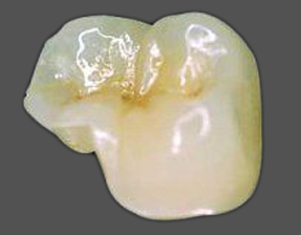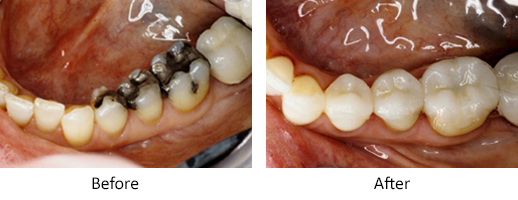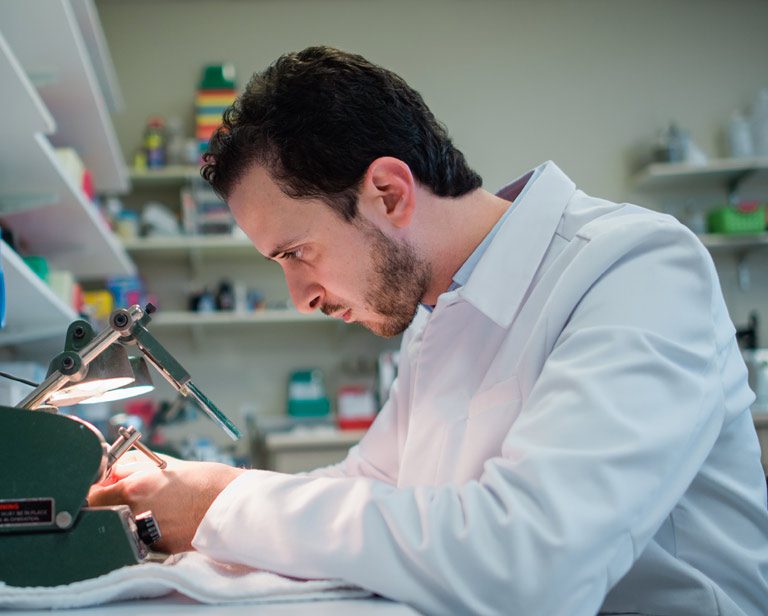If you have a tooth with extensive damage or decay, many dentists would want to grind the tooth down and do a crown. A more conservative option would be to cover only the damaged parts with a porcelain onlay. Dr. Tostado and Dr. Acuña craft custom onlays in their on-site dental lab.
What Is a Porcelain Onlay?

Porcelain onlay for a molar tooth
A porcelain onlay is a custom restoration for decay or damage that seriously weakens a tooth. An onlay is a less invasive alternative to a dental crown.
In our office, we mill our onlays using lithium disilicate, a space-age high-strength ceramic. They are created in a matter of minutes with CAD-CAM technology, avoiding the need for a second appointment and a temporary restoration.
When Are Onlays Used?
Dr. Tostado or Dr. Acuña may recommend a porcelain onlay in these cases:
- When a dental filling is not enough to restore a decayed tooth
- When a tooth is at risk of fracture
- As a conservative alternative to a dental crown
- To correct a problem with your occlusion
- To restore a broken portion of a tooth
What Are the Advantages of Porcelain Onlays?
The advantages of porcelain onlays include conservative tooth preparation, aesthetics, and superior fit for the following reasons:
- Conservative tooth preparation – An onlay requires removing damage or decay only, while preserving healthy tooth structure. In contrast, a dental crown requires shaving down a tooth on all sides.
- Minimize gum irritation – A crown extends under the gumline, so it has the potential to irritate the gums. An onlay leaves natural tooth structure in contact with the gum.
- Aesthetics – Dr. Tostado and Dr. Acuña match the color, gloss, and translucence of your natural teeth by using high-quality ceramic for onlays.
- Superior fit – In-office CAD/CAM technology makes custom restorations in one visit. Your onlay will fit precisely and seal out bacteria, protecting your tooth from decay.
What Is the Process?
The porcelain onlay process requires more skill and detail than placing dental crowns. Dr. Tostado and Dr. Acuña have advanced training to ensure you receive natural-looking restorations and a healthy, well-aligned bite.
The process includes these steps:
- Examine and x-ray your tooth to determine whether you will benefit from an onlay
- Numb the tooth
- Remove decayed, damaged, or weak areas from your tooth
- Take a digital impression of your tooth with a camera
- Mill a custom onlay in our on-site lab while you wait
- In a few minutes, place the finished onlay and check it for proper fit
- Bond the onlay to your tooth

Porcelain onlays
Are You Interested in Restoring a Tooth with an Onlay?
If you are interested in an onlay as a conservative approach to restoring the function and beauty of a tooth, call us to schedule an appointment, or request an appointment online.


